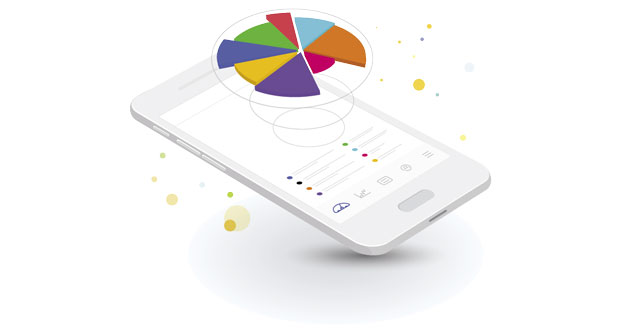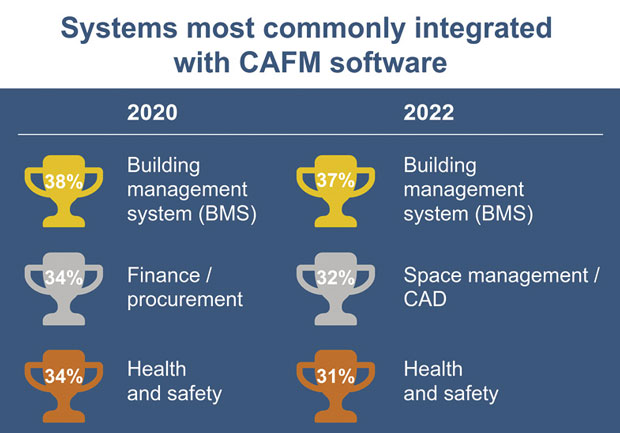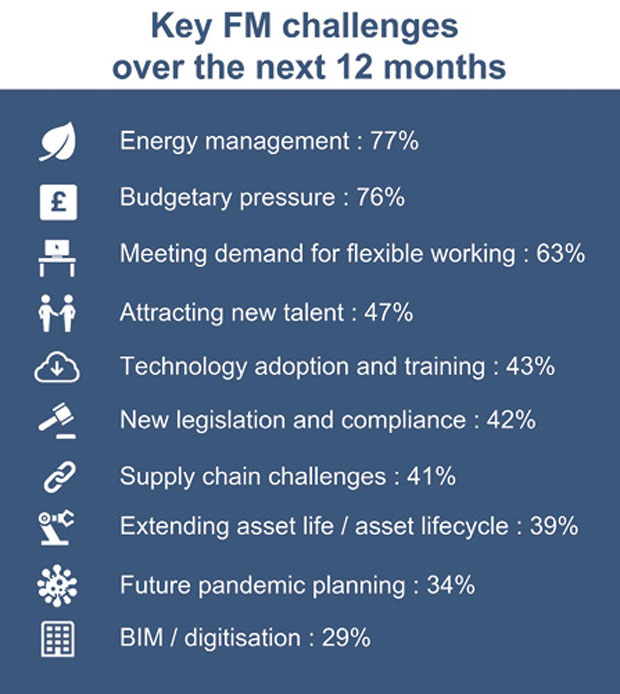►RESPONDENTS’ FM TEAMS RANGE FROM >5 TO <100
INTEGRATION
When asked about the tools FMs use to manage their work, aside from Excel spreadsheets, FM software was the most commonly used solution, followed by software tools developed in-house. Forty seven per cent are either planning to change their tool or software or are undecided as yet.
Of those planning to change, lack of integration with other organisational systems was the most common reason. A lack of required functionality and out-dated systems were also popular responses which further point to issues with integration.
The potential for integration was highlighted by a handful of respondents in the survey. One said: “I am an advocate for further adoption of technology. Aligning our digital platforms into a single interface would enable greater opportunities to deliver a better service for a lower cost to the organisation.”
Another respondent bemoaned outdated client IT systems, saying: “The technology in FM is continually hampered by utilising the same infrastructure as client’s business critical IT, which leads to a lack of desire to integrate and utilise the technology that exists.”
Interestingly, integration with space management and CAD tools has increased since our last survey: In 2020, 32 per cent of people reported integration, compared with 11 per cent in 2022.
Whether this trend continues may well hinge on the supporting IT infrastructure and ensuring that all systems can be readily integrated before making the change.
VISUALISATION
Visualisation is the process of creating digital renders of buildings not yet constructed (to help demonstrate the finished space) or reimagined with a different purpose (for example to show transformation of an unused retail unit into a functional café).
Similarly to BIM and, perhaps surprisingly, slightly more respondents are employing visualisation with 15 per cent already using it and a further 19 per cent are planning to.
Visualisation seems particularly popular in higher education. FMs from eight universities took part in the survey; four of those are already using visualisation, and another three are planning to use it. It’s fair to assume their use would be to give virtual campus tours to students that have not been able to attend in-person because of the pandemic.
►36 PER CENT WORK IN THE PRIVATE SECTOR; 28 PER CENT IN THE PUBLIC SECTOR; 23 PER CENT AS A SERVICE PROVIDER IN BOTH
Although COVID restrictions have been removed and don’t look as if they will return for the foreseeable future, visualisation will still be an important tool for FMs in the coming years. We have all become familiar with digital tools, whether that’s video calls or virtual tours.
Virtual tours are great for showing prospective tenants around an office space. For high priority spaces, such as a hospital operating room, virtual tours can be given to surgeons who may not have the time to visit in-person.
This trend is definitely one to watch, especially if client demand stays strong.
TECH MUST BE A STRATEGIC DECISION
It’s vital that whatever tech is employed is done so strategically. We’ll leave the final word to one of our respondents: “Collecting data is great, but it needs to be available to the client in full and any data collection needs to create added value; there is no point collecting data/going digital if the process is not more efficient.”







